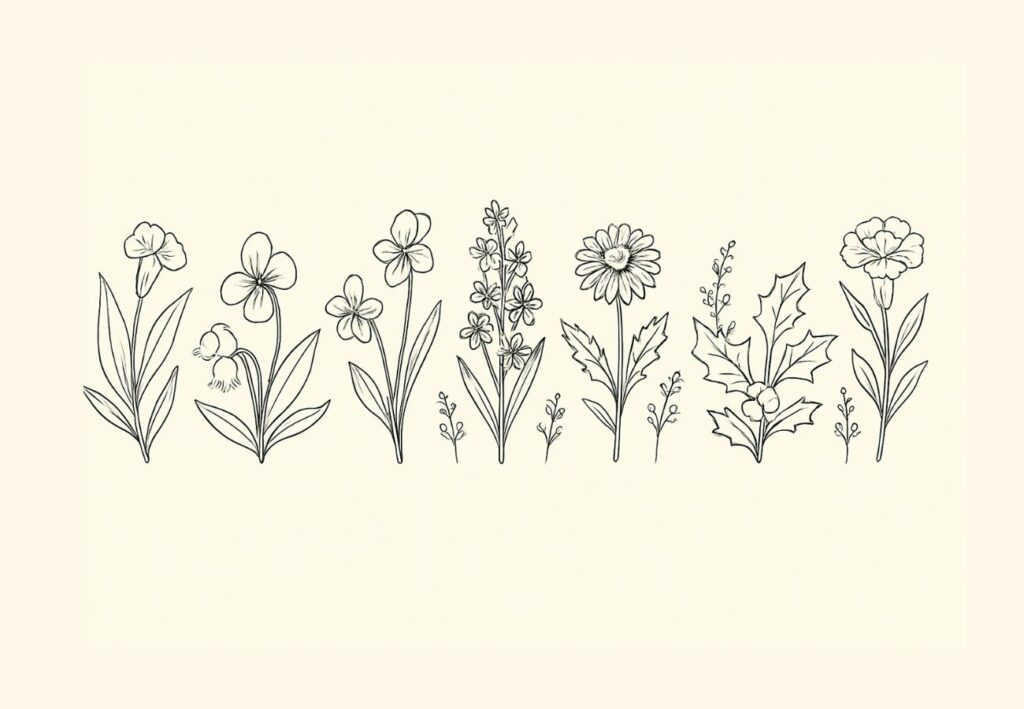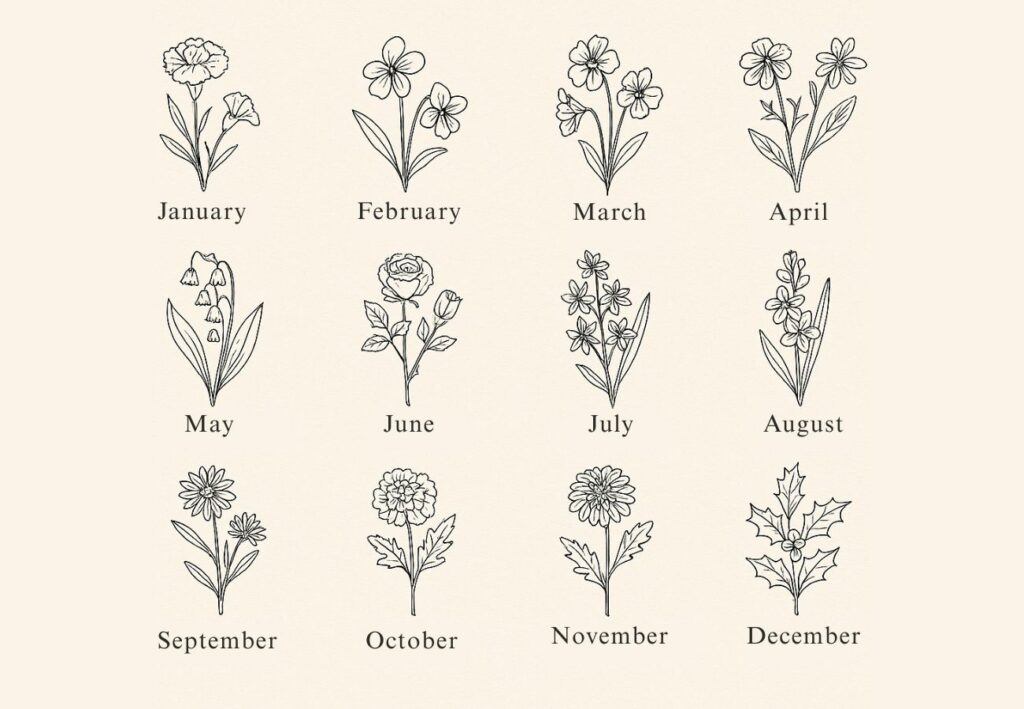Flowers have long been woven into the fabric of human storytelling — symbolising love, hope, resilience, and joy. Just like birthstones, each month of the year is paired with a special bloom that carries deep meaning and cultural history. Whether you’re choosing a personal keepsake, a birthday bouquet, or simply deepening your floral knowledge, exploring birth flowers is a charming way to connect with nature’s beauty.
Let’s journey through the year, one meaningful bloom at a time.
January – Carnation
Kicking off the year, the carnation represents admiration, love, and distinction. These ruffled, hardy flowers are known for thriving even in cooler climates — perfect for symbolising strength and devotion. In Victorian times, different colours of carnations had different meanings: red for deep love, pink for gratitude, and white for pure affection.
February – Violet
February’s flower, the violet, brings a touch of whimsy and modesty. Violets have been cherished since Ancient Greece, where they symbolised love and fertility. Their dainty purple petals and sweet scent make them a beautiful metaphor for loyalty and humility. A lovely, lesser-known alternative is the iris, also tied to faith and hope.
March – Daffodil
The daffodil bursts onto the scene in March, perfectly timed with the arrival of early autumn in Australia. Bright, cheerful, and full of optimism, daffodils are a symbol of new beginnings and friendship. They’re a reminder that even after the coldest seasons, warmth and growth are on the horizon.
April – Daisy
April babies are represented by the sunny, playful daisy. With its simple beauty, the daisy symbolises innocence, purity, and true love. In Norse mythology, the daisy was sacred to Freya, the goddess of love, beauty, and fertility — making it a fitting flower for fresh starts and joyful moments.
May – Lily of the Valley
Delicate yet powerfully fragrant, the lily of the valley is May’s bloom. This sweet, bell-shaped flower is a symbol of humility, sweetness, and renewed happiness. It has a long-standing connection to romance and devotion — so much so that royal brides, like Kate Middleton, often include it in their wedding bouquets.
June – Rose
The rose hardly needs an introduction! June’s flower is a timeless emblem of love, passion, and honour. Each rose colour carries its own message: red for deep love, yellow for friendship, pink for admiration, and white for purity. Roses have captured the hearts of poets and lovers alike for centuries, and they continue to be a cherished favourite.
July – Larkspur
July’s flower, the larkspur, brings an airy, romantic feel to the middle of the year. Available in shades of purple, blue, pink, and white, larkspur symbolises positivity and an open heart. In Victorian flower language, it was often used to express strong bonds of love and celebration.
August – Gladiolus
The striking gladiolus is August’s birth flower, known for its tall, sword-like stems and vibrant colours. Fittingly, it represents strength, integrity, and infatuation. Gladiolus flowers were named after the Latin word gladius, meaning sword — a nod to the resilience and courage they embody.
September – Aster
September welcomes the aster, a dainty bloom symbolising wisdom, love, and faith. In Ancient Greece, asters were believed to have been created from the tears of the goddess Astraea. They were often placed on altars as offerings, and today they continue to represent deep emotional connections and elegance.

October – Marigold
October’s flower, the marigold, burns brightly with rich golds, oranges, and reds. Known as the “herb of the sun,” marigolds symbolise warmth, passion, and creativity. They also play an important role in cultural celebrations like Día de los Muertos, where they honour the memory of loved ones.
November – Chrysanthemum
The chrysanthemum is November’s proud, vibrant flower. In Australia, it’s often affectionately associated with Mother’s Day (thanks to the ‘mum’ in its name), but for birthdays it symbolises joy, loyalty, and longevity. In Japanese culture, the chrysanthemum is a symbol of the Emperor and the Imperial family — a testament to its regal status.
December – Holly
Although not technically a flower, the holly plant with its glossy green leaves and bright red berries is December’s symbol. It embodies protection and goodwill — fitting for the festive spirit of the season. Historically, holly was thought to ward off evil spirits and bring blessings for the new year.
Choosing Birth Flowers for Meaningful Gifts
Whether you’re creating a personalised bouquet, designing home decor, or selecting jewellery, incorporating birth flowers adds a thoughtful touch. Pair the bloom with its corresponding colour, or mix birth flowers of loved ones for a truly special arrangement. You could even press and frame a birth flower for a sentimental piece of art.
Birth flowers remind us that every month — and every person — has its own unique beauty and story to tell.



